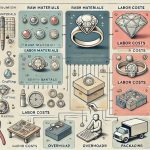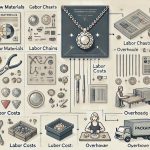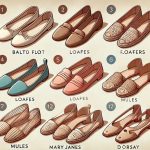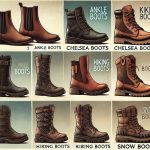Tablet PCs have become a vital part of modern computing, blending the portability of smartphones with the functionality of laptops. The production of these devices is a complex process involving numerous steps, from conceptualization and design to assembly and testing.
How Tablet PCs are Produced
Design and Conceptualization
Before production begins, the design and concept of the tablet are developed. This stage involves industrial designers and engineers working together to create a blueprint that balances aesthetic appeal with functional requirements.
Market Research and Consumer Needs
Understanding the market is crucial in the initial design phase. Manufacturers analyze consumer needs, market trends, and technological advancements to determine the features and specifications of the new tablet. This includes decisions on screen size, processing power, battery life, and other key aspects.
Prototyping and Testing
Once a design concept is established, the next step is prototyping. Engineers create a working model of the tablet, which is then subjected to various tests. This phase helps identify any potential design flaws or manufacturing challenges, ensuring the final product will meet quality and performance standards.
Component Sourcing
Tablet PCs require a wide range of components, including processors, displays, memory, batteries, and more. These components are sourced from various suppliers, each specializing in different aspects of technology.
Selection of Key Components
The main components, such as the CPU, GPU, and memory chips, are chosen based on the tablet’s intended performance level. High-performance tablets may use advanced processors, while budget models might opt for less powerful, cost-effective options.
Supply Chain Management
Effective supply chain management is critical in this stage. Manufacturers must coordinate with multiple suppliers to ensure timely delivery of components. This includes managing logistics, quality control, and cost efficiency to keep production on schedule.
Manufacturing and Assembly
With the components sourced and design finalized, the actual manufacturing process begins. This involves several stages of assembly and integration, often carried out in specialized facilities.
Printed Circuit Board (PCB) Assembly
The heart of any tablet is its printed circuit board (PCB), where the processor, memory, and other critical components are mounted. The assembly process involves precise placement of these components onto the PCB using automated machines, followed by soldering to secure them.
Display and Touchscreen Integration
The display and touchscreen are vital for user interaction. These components are carefully aligned and bonded to ensure responsiveness and durability. Modern tablets use advanced display technologies, such as OLED or LCD, depending on the device’s target market.
Battery Installation
Powering the tablet requires a reliable and efficient battery. Lithium-ion batteries are commonly used due to their high energy density and rechargeability. The battery is securely installed within the tablet’s chassis, ensuring safety and longevity.
Casing and Structural Assembly
The external casing of the tablet, typically made from metal or plastic, is assembled around the internal components. This casing not only provides structural integrity but also contributes to the tablet’s aesthetic design. Precision in this stage is crucial to maintaining a sleek, durable, and lightweight final product.
Software Installation
A tablet is only as good as the software that runs on it. Once the hardware is assembled, the next step is to install the operating system (OS) and any additional software.
Operating System Integration
Most tablets run on popular operating systems like Android, iOS, or Windows. The OS is flashed onto the tablet’s memory, after which the device undergoes boot tests to ensure the software and hardware interact seamlessly.
Application Installation and Customization
Depending on the target market, the tablet may come preloaded with specific applications or custom interfaces. This stage also involves setting up security features and user interface optimizations to enhance the user experience.
Quality Control and Testing
Before reaching consumers, every tablet must pass rigorous quality control and testing procedures to ensure it meets the required standards.
Functional Testing
Each tablet is subjected to a series of functional tests, including checks for touchscreen responsiveness, display quality, sound output, and connectivity. Any defects identified during this phase are addressed to ensure the tablet functions as intended.
Durability and Stress Testing
Tablets undergo stress tests to simulate real-world usage and conditions. This can include drop tests, water resistance tests, and temperature endurance tests. These assessments help guarantee that the tablet will perform reliably in various environments.
Packaging and Distribution
Once the tablets pass all quality tests, they are ready for packaging and distribution.
Packaging Process
Tablets are carefully packaged to protect them during transit. This process includes the placement of the tablet in protective materials, along with accessories like chargers, cables, and user manuals.
Global Distribution Networks
The final step in the production process is distributing the finished tablets to retailers and consumers worldwide. This involves managing logistics, coordinating with distribution partners, and ensuring that the tablets arrive safely and on time.
Production Cost Distribution
The production cost of tablet PCs is typically divided into several categories:
- Components (50-60%): This includes the display, processor, memory, battery, camera, and other hardware components.
- Assembly and Manufacturing (20-25%): Costs related to assembling the components, quality control, and manufacturing overheads.
- Research and Development (10-15%): Investments in design, technology development, and software.
- Marketing and Distribution (5-10%): Costs associated with marketing campaigns, packaging, and distribution logistics.
- Other Costs (5-10%): Includes administrative expenses, taxes, and miscellaneous costs.
Types of Tablets

1. Basic Tablets
Overview
Basic tablets are designed for general use, including web browsing, media consumption, and light productivity tasks. They are often the most affordable option and cater to casual users and students.
Popular Brands
| Brand | Established | Location |
|---|---|---|
| Amazon Fire | 2007 | Seattle, USA |
| Lenovo Tab | 1984 | Beijing, China |
| Samsung Tab A | 1938 | Seoul, South Korea |
| RCA Voyager | 1919 | New York, USA |
| Asus ZenPad | 1989 | Taipei, Taiwan |
Averaged Retail Price on Amazon
- $50 – $150
Market Popularity
Basic tablets are popular among budget-conscious consumers and families looking for affordable devices for children. They are widely used due to their low cost and sufficient performance for everyday tasks.
Production Details
- White Label Production Cost in China: $30 – $60 per unit
- Product Weight: 300 – 500 grams
- Minimum Order Quantity: 1,000 units
- Major Materials: Plastic, LCD display, standard battery
2. Mid-Range Tablets
Overview
Mid-range tablets offer better performance, build quality, and features compared to basic tablets. They are suitable for users who need more power and functionality for multitasking, gaming, and media editing.
Popular Brands
| Brand | Established | Location |
|---|---|---|
| Apple iPad | 1976 | Cupertino, USA |
| Samsung Tab S | 1938 | Seoul, South Korea |
| Huawei MediaPad | 1987 | Shenzhen, China |
| Microsoft Surface Go | 1975 | Redmond, USA |
| Xiaomi Mi Pad | 2010 | Beijing, China |
Averaged Retail Price on Amazon
- $200 – $400
Market Popularity
Mid-range tablets are popular among students, professionals, and tech enthusiasts who require more capabilities and better performance for their tasks.
Production Details
- White Label Production Cost in China: $100 – $200 per unit
- Product Weight: 400 – 700 grams
- Minimum Order Quantity: 500 units
- Major Materials: Aluminum/plastic, IPS LCD display, high-capacity battery
3. High-End Tablets
Overview
High-end tablets offer top-tier performance, premium build quality, and advanced features. They are designed for professionals and power users who need the best in terms of processing power, display quality, and additional functionalities.
Popular Brands
| Brand | Established | Location |
|---|---|---|
| Apple iPad Pro | 1976 | Cupertino, USA |
| Samsung Galaxy Tab S7 | 1938 | Seoul, South Korea |
| Microsoft Surface Pro | 1975 | Redmond, USA |
| Lenovo Yoga Tab | 1984 | Beijing, China |
| Huawei MatePad Pro | 1987 | Shenzhen, China |
Averaged Retail Price on Amazon
- $500 – $1,200
Market Popularity
High-end tablets are favored by creatives, professionals, and gamers who require the highest performance, graphics, and productivity features.
Production Details
- White Label Production Cost in China: $300 – $500 per unit
- Product Weight: 600 – 800 grams
- Minimum Order Quantity: 500 units
- Major Materials: Aluminum, OLED/Retina display, high-capacity battery
4. 2-in-1 Tablets
Overview
2-in-1 tablets, also known as hybrid tablets, combine the functionality of a tablet and a laptop. They typically come with detachable keyboards and are aimed at users who need a versatile device for both work and entertainment.
Popular Brands
| Brand | Established | Location |
|---|---|---|
| Microsoft Surface | 1975 | Redmond, USA |
| Lenovo ThinkPad X1 | 1984 | Beijing, China |
| HP Spectre x360 | 1939 | Palo Alto, USA |
| Dell XPS 13 2-in-1 | 1984 | Round Rock, USA |
| Asus Transformer | 1989 | Taipei, Taiwan |
Averaged Retail Price on Amazon
- $600 – $1,500
Market Popularity
2-in-1 tablets are popular among professionals, students, and business travelers who need the functionality of a laptop with the portability of a tablet.
Production Details
- White Label Production Cost in China: $400 – $700 per unit
- Product Weight: 800 – 1,200 grams (with keyboard)
- Minimum Order Quantity: 500 units
- Major Materials: Aluminum, IPS/OLED display, high-capacity battery
5. Gaming Tablets
Overview
Gaming tablets are designed for high-performance gaming on the go. They feature powerful processors, high-refresh-rate displays, and enhanced cooling systems to handle demanding games.
Popular Brands
| Brand | Established | Location |
|---|---|---|
| Nvidia Shield | 1993 | Santa Clara, USA |
| Asus ROG Flow | 1989 | Taipei, Taiwan |
| Lenovo Legion | 1984 | Beijing, China |
| Samsung Galaxy Tab S7+ | 1938 | Seoul, South Korea |
| Apple iPad Pro | 1976 | Cupertino, USA |
Averaged Retail Price on Amazon
- $500 – $1,000
Market Popularity
Gaming tablets are gaining popularity among gamers who want a portable yet powerful device for gaming and multimedia.
Production Details
- White Label Production Cost in China: $300 – $600 per unit
- Product Weight: 500 – 800 grams
- Minimum Order Quantity: 500 units
- Major Materials: Aluminum, high-refresh-rate LCD/OLED display, advanced cooling systems
6. Business Tablets
Overview
Business tablets are tailored for corporate use, offering features like enhanced security, productivity software, and integration with enterprise systems. They are designed to meet the needs of professionals in various industries.
Popular Brands
| Brand | Established | Location |
|---|---|---|
| Microsoft Surface Pro | 1975 | Redmond, USA |
| Samsung Galaxy Tab Active | 1938 | Seoul, South Korea |
| Lenovo ThinkPad | 1984 | Beijing, China |
| HP Elite x2 | 1939 | Palo Alto, USA |
| Dell Latitude | 1984 | Round Rock, USA |
Averaged Retail Price on Amazon
- $700 – $1,400
Market Popularity
Business tablets are popular among corporate users and enterprises that require reliable and secure devices for their workforce.
Production Details
- White Label Production Cost in China: $350 – $600 per unit
- Product Weight: 700 – 1,000 grams
- Minimum Order Quantity: 500 units
- Major Materials: Aluminum, high-resolution LCD/OLED display, enterprise-grade security features
7. Educational Tablets
Overview
Educational tablets are designed for use in schools and educational settings. They often come with pre-installed educational software, durable designs, and features aimed at enhancing learning experiences.
Popular Brands
| Brand | Established | Location |
|---|---|---|
| Apple iPad | 1976 | Cupertino, USA |
| Amazon Fire Kids | 2007 | Seattle, USA |
| Samsung Galaxy Tab A Kids | 1938 | Seoul, South Korea |
| Lenovo Tab M10 | 1984 | Beijing, China |
| LeapFrog LeapPad | 1994 | Emeryville, USA |
Averaged Retail Price on Amazon
- $100 – $300
Market Popularity
Educational tablets are widely used in schools and by parents who want to provide their children with learning tools and resources.
Production Details
- White Label Production Cost in China: $50 – $100 per unit
- Product Weight: 300 – 600 grams
- Minimum Order Quantity: 1,000 units
- Major Materials: Plastic, LCD display, ruggedized casing
8. Drawing Tablets
Overview
Drawing tablets are specifically designed for artists and designers who need precise input and high-resolution displays for their creative work. These tablets often come with a stylus and offer features like pressure sensitivity and tilt recognition.
Popular Brands
| Brand | Established | Location |
|---|---|---|
| Wacom | 1983 | Saitama, Japan |
| Huion | 2011 | Shenzhen, China |
| XP-Pen | 2005 | Japan |
| Apple iPad Pro | 1976 | Cupertino, USA |
| Microsoft Surface Pro | 1975 | Redmond, USA |
Averaged Retail Price on Amazon
- $300 – $1,200
Market Popularity
Drawing tablets are highly popular among professional artists, graphic designers, and hobbyists due to their high precision and advanced features.
Production Details
- White Label Production Cost in China: $150 – $400 per unit
- Product Weight: 500 – 1,000 grams
- Minimum Order Quantity: 500 units
- Major Materials: Aluminum/plastic, high-resolution LCD/OLED display, stylus
9. Kids’ Tablets
Overview
Kids’ tablets are designed with child-friendly features, including parental controls, educational content, and durable, shock-resistant bodies. They are aimed at younger children who need a safe and engaging digital device.
Popular Brands
| Brand | Established | Location |
|---|---|---|
| Amazon Fire Kids | 2007 | Seattle, USA |
| LeapFrog LeapPad | 1994 | Emeryville, USA |
| Samsung Galaxy Tab A Kids | 1938 | Seoul, South Korea |
| VTech InnoTab | 1976 | Hong Kong, China |
| Dragon Touch Y88X | 2011 | Shenzhen, China |
Averaged Retail Price on Amazon
- $60 – $150
Market Popularity
Kids’ tablets are very popular among parents and educators for their educational content and durability. They are widely used to provide safe, educational entertainment for children.
Production Details
- White Label Production Cost in China: $30 – $70 per unit
- Product Weight: 300 – 500 grams
- Minimum Order Quantity: 1,000 units
- Major Materials: Plastic, LCD display, rubberized casing for durability








